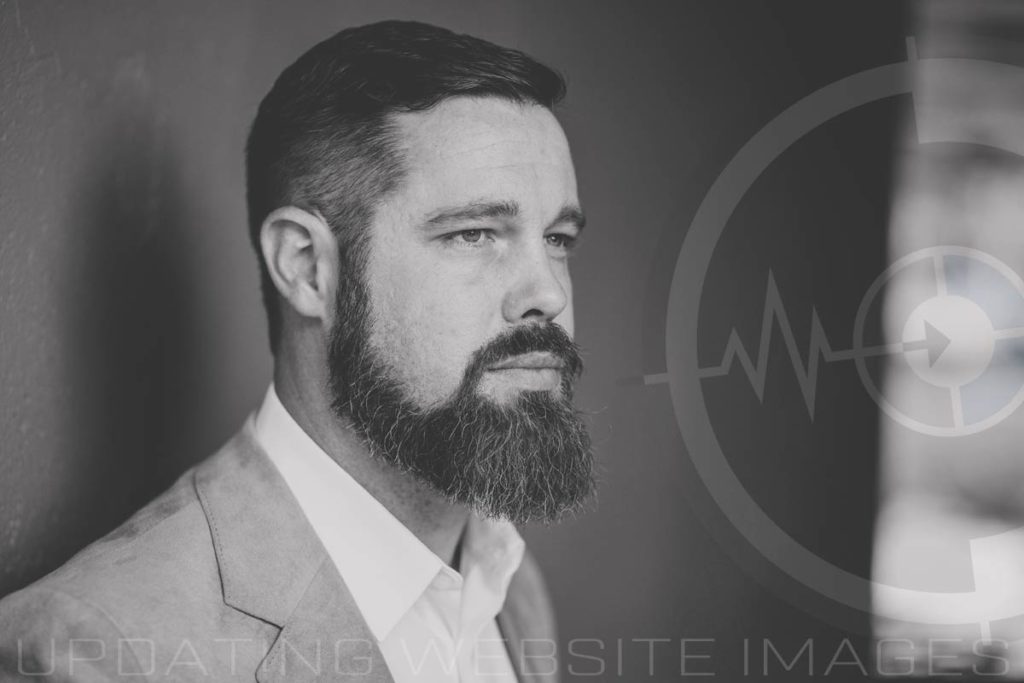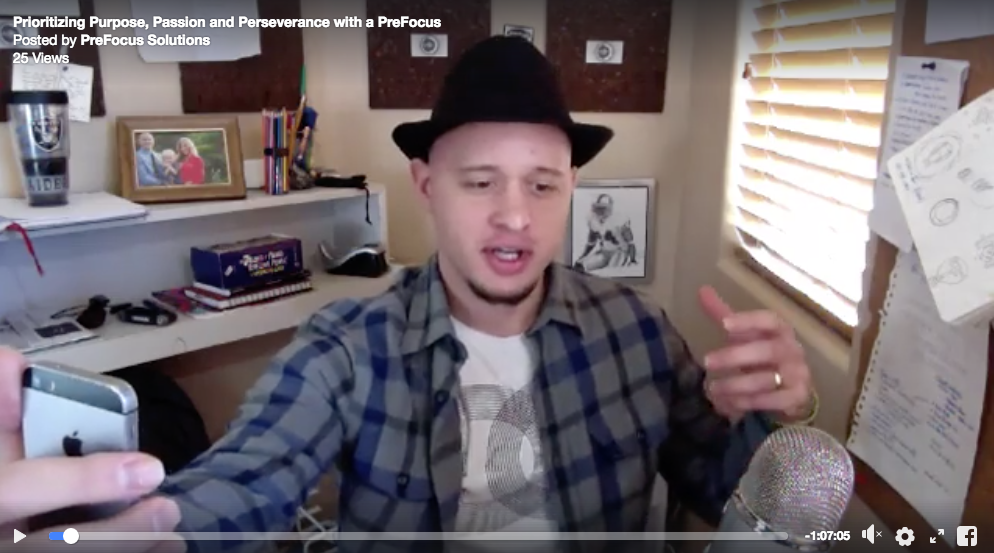Is the Value of Quality Really Being Valued?Whether a purchase causes inconvenience or disfunction, it normally forces you to re-evaluate your decision. (I say normally because purchases, like cable, don't really apply). Often times, people pass on higher quality...
How to Write a Website About Page Part 1

How to Write a Website About Page Part 1
When it comes to website conversion rates, about pages play a significant role. Doing without is not wise. Consumers, especially in competitive markets, want to find brands that deliver on promises. Communicating credibility is a good start, but business insight cannot lack substance. Since anyone can create a business, it's important that your content helps differentiate your value in the marketplace. So, I thought I'd show you how to write a website about page that'll aid your ability to convert traffic. Part 2ConsultingUnderstanding how to write a website about page is more than the copy itself. In other words, your presentation plays a big role in how your information is perceived. Before we start writing, we have to determine how we want to convey the brand itself. Answering the below questions and publishing them isn’t nearly as effective when value propositions aren’t tactfully positioned. Your first impression is important.
Without a clear and meaningful insight, you’re going to miss out on a big opportunity to persuade your visitors. With that said, in the first blog of this series, I’m going to touch on the areas most consumers value first. Once you have a clear understanding of how to communicate each element, I’ll explain how to organize your on-page copy. Let’s begin with your origin.

Defining the “Why You Are” Statement.
In today’s marketing spectrum, “why stories” are being discussed more frequently – and rightfully so. Setting yourself apart with purpose will speak volumes to your potential customers. At the same time, communicating a genuine story that’s relatable and trustworthy is where your focus needs to be.
Although it can be easy to discuss needs and market opportunities, people want to know you have a reason for “why you are.” No matter what else you include, this statement is the most important element of your about page. The problem with so many brand strategies is that statistics are often the only source of persuasion. But targeting opportunity is not enough to succeed. Your legitimate reasoning is what eventually establishes loyalty.
Quality About Pages Are a Difference Maker.
Companies that develop their branding know how to write a website about page. There will always be someone ready and willing to sprout out of the ground to take your idea and do it better. You can attack a competitor’s weakness or tell people why you’re worth their dollar – but these are simply sale’s tactics.
The website, as a whole, needs to be seen as an experience. Your “why” is unique and it’s on you to tell the people what they ought to know, not just what you think they want to read. So, how can you formulate your “why” when writing an about page?

Ask Yourself Three Questions + Answer in Detail:
- Why did you start doing what you’re doing? Did you experience something you felt the need to address? Do you know someone else that did? Was it a loved one, family member, friend or customer? Are there a number of people experiencing this that you want to help? How can you relate to their personal experience in different ways? Does the problem involve mismanagement or a lack of quality? Did you play a role in the dissatisfaction? Have you been harboring a skill due to fear?
There has to be some form of conflict that means something in order to legitimize your purpose. Which brings me to my next question..
- Are you passionate about your why? This ties in your personal connection with the value. Why are you now committed to this? How and why are you fed up? In the past, what has been in the way of you taking action? Did you recently have an epiphany or paradigm shift about something? How can people feel you? Why should people believe in you? What might hinder you down the road? What might you need help with to fulfill your vision? Any dip in passion will eventually become evident.
Be transparent and genuine when writing your about page. Remember, it’s your authentic story of origin. Take some time.
- Why do you believe you’re competent enough to deliver? What does the et al experience of your brand bring to the table? Why does your experience bode well with what you’re set out to accomplish? If you’ve had this idea for a while, why now? What has happened that’s allowed you to step into the limelight with value?
Any marketer or copywriter that isn’t able to break this stuff down for you really doesn’t know how to write a website about page. Even if they’re great at SEO, quality content will always enhance this small corner of your business.
Why Not an About Page Example?
One of my current clients just launched his own physical therapy practice after 17 years in the industry. When writing his about page, he could have simply listed his credentials. But, we knew his “why” would resonate with patients. He was frustrated with the lack of personalized care and was passionate about creating a welcoming environment. He wanted patients to be treated as people and not just a number. He was transparent with his fear of failure, but was committed to his promise. We captured original imagery of his location and family so visitors could feel his sincerity. Last month, we hosted his grand opening and he’s already looking to scale.
My personal story with the owner also resonates. After unexpected shoulder surgery, and losing my job, Mark really helped me through a tough time. I was able to regain my strength and a friend. So helping him start his own company was a privileged and a lot of fun! Needless to say, it was pretty easy to help him write an about page.
Before Moving on From Your “Why”..
Each brand is different. Every “why story” has an experience tied to it. So, if you’re trying to figure out how to write a website about page, start with your definitive differentiation. When it comes to a company description, there are a number of things to consider. But I really want you to spend some time on this element of the page. Stew or sleep on it as long as you can.
The last thing I want to do is give you some sort of generic guide on about page copywriting. Doing so wouldn’t help you stand out at all. Templates and outlines are for basic marketers. Before paying someone to build your website, take the time to build your brand the right way (and right away). Everything becomes so much easier.
Have Writer’s Block? Reevaluate Your Vision.
If you’re unable to expand on your why, then I want you to really consider what you’re doing. Building a business off of an idea is one thing – creating a valuable experience is another. Go after your dreams for the right reason and not just for the green ones. It’ll never last.
Stay tuned for the next installment of this blog series! In part two, I’ll be discussing the what, who, how and where of your business. If you have any questions on your about page copy, just let me know! Be purposeful in everything you do and always remember to PreFocus!
Short + Detailed About Page Writing:
Need Help Writing About Page Content?
I take pride in a thorough discovery process that organizes every form of value that your brand has to offer. I’m not a standardized marketing platform that executes a specific number of monthly initiatives. At PreFocus, I help you refocus on your actual branding so everything you invest in makes sense – to you and your customers. Your first consultation is FREE!












 Don’t get me wrong – every video has it’s place. Sometimes you have to explain things. But purposing every video is key.
Don’t get me wrong – every video has it’s place. Sometimes you have to explain things. But purposing every video is key.  What I’ve learned over the last decade is that consumers are beginning to value who they give their money to. Deals, promises or ego-boosting-media has created purchase hesitancy. This is why I encourage clients to avoid popular topics and consider the power of your
What I’ve learned over the last decade is that consumers are beginning to value who they give their money to. Deals, promises or ego-boosting-media has created purchase hesitancy. This is why I encourage clients to avoid popular topics and consider the power of your  The last step in maximizing video content pertains to publishing. The easiest way for most of you to share video content is through Youtube. But don’t overlook the little details. Things like the featured image (the picture that previews your video) can play a big role in click through rates. Using a screen shot or standard header image is better than nothing. But creating a video graphic with the title is worth the extra time.
The last step in maximizing video content pertains to publishing. The easiest way for most of you to share video content is through Youtube. But don’t overlook the little details. Things like the featured image (the picture that previews your video) can play a big role in click through rates. Using a screen shot or standard header image is better than nothing. But creating a video graphic with the title is worth the extra time.





 First and foremost, you’ll want to determine where you’re directing traffic for your business. You could have a brick and mortar location that needs some foot traffic, or you might be looking to grow your visitor count on-site. Either way, you can maximize marketing efforts by funneling these people to a specific destination.
First and foremost, you’ll want to determine where you’re directing traffic for your business. You could have a brick and mortar location that needs some foot traffic, or you might be looking to grow your visitor count on-site. Either way, you can maximize marketing efforts by funneling these people to a specific destination. Although the customer route is #1 on my list of things to consider before marketing a brand, identifying what conversions look like is a close 2nd. A majority of companies justify their sales through monetary reality, but there’s plenty of other value out there. I challenge you to take the time to weigh the
Although the customer route is #1 on my list of things to consider before marketing a brand, identifying what conversions look like is a close 2nd. A majority of companies justify their sales through monetary reality, but there’s plenty of other value out there. I challenge you to take the time to weigh the  A common misconception I hear during the discovery process is that companies HAVE to advertise and
A common misconception I hear during the discovery process is that companies HAVE to advertise and  Another huge mistake made by new business owners, entrepreneurs, and start ups is trusting someone to manage their marketing without their input. This blows my mind, to be honest. I understand that
Another huge mistake made by new business owners, entrepreneurs, and start ups is trusting someone to manage their marketing without their input. This blows my mind, to be honest. I understand that  OK, so here’s my cue.. We’ve talked about determining where to send potential customers, what a conversion means, publishing with purpose, and measuring results. Planning for all of these phases will increase your ability to attract and retain customers. When you’re able to piece everything together as a brand identity, you begin to create a presentation that’s perceived well.
OK, so here’s my cue.. We’ve talked about determining where to send potential customers, what a conversion means, publishing with purpose, and measuring results. Planning for all of these phases will increase your ability to attract and retain customers. When you’re able to piece everything together as a brand identity, you begin to create a presentation that’s perceived well. Remember, the way you present yourself creates an experience for your customers. No matter where consumers see your brand, it needs to be relevant, valuable, trustworthy, and sensible. A great first impression builds awareness – and
Remember, the way you present yourself creates an experience for your customers. No matter where consumers see your brand, it needs to be relevant, valuable, trustworthy, and sensible. A great first impression builds awareness – and 